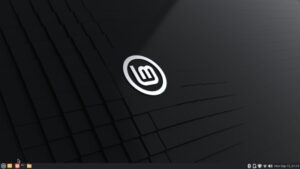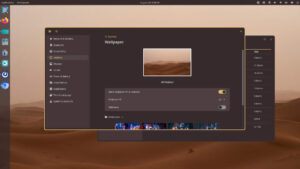If all goes according to plan, by the time this article publishes, downloads will be available for AlmaLinux 10 Beta.
Things are getting kind of confusing at AlmaLinux now that the company has its regular eponymous distro for end users — the one that’s a ready-to-fly drop-in replacement for Red Hat Enterprise Linux — and Kitten, its clone of CentOS Stream — or RHEL’s upstream — which is mainly intended for developers to use as they work on getting ready for the next production ready version of AlmaLinux.
Because it doesn’t concern me much — since I’m a mere mortal and not a developer in RHEL-clone space — I’d forgotten all about Kitten, until AlmaLinux sent me an advance look at a blog by AlmaLinux software developer Eduard Abdullin about the release of AlmaLinux 10 Beta, which had me all confidently ready to report on the release of AlmaLinux’s new beta until the blog took a confusing (to me) side trip into Alma Linux Kitten 10 Beta territory, which had me scratching my head and wondering aloud in good Rosencrantz and Guildenstern style, “but which is which and who is whom?”
Eventually I found myself dashing off an email to benny Vasquez, who calls herself AlmaLinux Foundation’s chairperson, when actually she’s just as often its explainer-in-chief.
“The blog has me confused. Is this a beta of AlmaLinux 10 or of AlmaLinux Kitten 10?”
You could tell I was confused because I was writing with emphasis, which I never do unless I’m in the middle of a confusion fit.
The answer turned out to be what I’d originally thought, but after my confusion fit I wasn’t about to write that without confirmation from benny. The fourth law of journalism, “don’t write about something unless you’re sure you know what you’re writing about,” applies as much to tech journalism as it does to real journalism.
“AlmaLinux 10,” was her answer. “AlmaLinux Kitten doesn’t have a beta, it is just a rebuild of CentOS Stream 10.”
Actually, if I’d taken a deep breath and thought about it, I would have remembered that the latest production-ready release of Kitten — if a development distro can be said to have a production-ready release — is also its first release, and it was already AlmaLinux Kitten 10 when it was pushed out the door without an alpha, beta, release candidate 1, or RC2 preceding it.
Anyway, it also turned out to be much ado about nothing. The beta release of AlmaLinux 10, which was supposed to happen on Tuesday morning, and which I was working to report late Tuesday afternoon, didn’t happen due to one kind of a glitch or another.
“Our release of the 10 Beta got delayed,” Vasquez told me in an email that pretty much immediately followed the email in which she told me there’s no such thing as a Kitten Beta. “It looks like we’re close to being able to push the publish buttons, but I’ll try to let you know when it actually happens.”
Shortly after dark I got another email.
“Looks like we got it worked out, but it’s too late in the day to publish tonight,” she said. “Will go live early Eastern Time tomorrow!”
It turned out that the Alma folks were now planning on making the new AlmaLinux 10 Beta go live at 7 AM Eastern Time on Wednesday, so we decided that I should finish this article and autoschedule it to run at 8 AM. You’ll know that everything went according to plan if the links to AlmaLinux 10 Beta’s release notes work.
What Is AlmaLinux 10 Beta
At this point you might be wondering how there can be a beta of an operating system that’s a clone of another operating system, which can’t come out until the operating system its a clone of is released. That’s a good question, even if it doesn’t come with a question mark. Basically, AlmaLinux 10 Beta is a clone of RHEL 10 Beta, which was released in November as a precursor to RHEL 10, which appears to be due to be released in Feburary.
Also pertinent: AlmaLinux is a bit of an outlier in RHEL clone space, since the distro’s developers aren’t attempting to create a line-by-line copy of RHEL’s code, but to create a feature-by-feature copy of the RHEL user experience. That leaves the door open for Alma to make some changes, as long as AlmaLinux continues to be a mirror of RHEL from a user perspective.
There are a few such changes made in this new edition, mainly centering on supporting hardware that’s been abandoned by Red Hat. For example, when RHEL made the move to x86-64-v3, it dropped support for the previous version. While AlmaLinux 10 defaults to x86-64-v3 by default, it continues to offer x86-64-v2 as an option for users using older hardware.
“The x86-64-v2 release of AlmaLinux OS 10 will only be suitable for workloads where using the default OS package set is enough, or where users will be able to rebuild any additional packages they require for x86-64-v2 architecture themselves,” AlmaLinux said in the release notes for AlmaLixux 10 Beta.
In addition Spice support, which was dropped in RHEL 9, has been re-enabled for both server and client applications. Additionally, KVM has been enabled for IBM POWER in the virtualization stack, and frame pointers have been re-enabled by default.
Also, because a lot of people use AlmaLinux as a desktop operating system, Firefox and Thunderbird are in the system repositories as regular RPM packages.
Downloading, Installing, and Beta Testing AlmaLinux
AlmaLinux 10 beta offers users the choice of three ISO images:
- AlmaLinux-10.0-beta-1-x86_64-boot.iso — a single network installation CD image that downloads packages over the internet, much like most “live” images do after you hit the install button.
- AlmaLinux-10.0-beta-1-x86_64-minimal.iso — a minimal self-containing DVD image that makes possible offline installation — great for enterprises needing to clone multiple machines.
- AlmaLinux-10.0-beta-1-x86_64-dvd.iso — a full installation DVD image that contains mostly all AlmaLinux packages.
You can find a mirror close to you on the mirrors.almalinux.org website.
Being that this is a beta release, it’s a good bet that most folks downloading this will be doing so in order to kick the tires and run tests under production load situations as a way of preparing for the release of the production-ready version of AlmaLinux 10, which will likely happen less than a week after the release of RHEL 10, which is scheduled to take place in February.
The way the folks at Alma see it, while you’re kicking the tires and testing for yourself, you can also be helping them give you a smoother on-ramp when the ready-for-prime-time version of AlmaLinux 10 goes live.
“Please, report any bugs you may see on the Bug Tracker,” the foundation said on the blog announcing the beta release. “Also, pop into the AlmaLinux Community Chat and join our Testing Channel, post a question on our 10.0 Beta Forum, on our AlmaLinux Community on Reddit, or catch us on X.
Editor’s note: All went according to plan and downloads for AlmaLinux 10 Beta were available in plenty of time for this article.
Christine Hall has been a journalist since 1971. In 2001, she began writing a weekly consumer computer column and started covering Linux and FOSS in 2002 after making the switch to GNU/Linux. Follow her on Twitter: @BrideOfLinux








